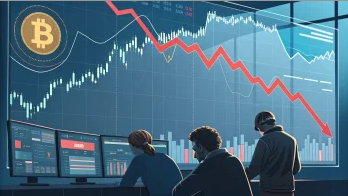Inflation has been a significant topic of discussion among financial analysts and experts. Monitoring the Consumer Price Index (CPI) is crucial for understanding inflation’s impact on the economy and its implications on monetary policies. This article closely examines the CPI inflation numbers for November, emphasizing key highlights and their possible effects on the market. Additionally, this piece will explore the anticipated market reaction to this data, which is expected to set the stage for the upcoming December Federal Reserve meeting.
View this post on Instagram
A post shared by Taylor Sohns- CFP®, CIMA®, MBA- Finance (@lifegoalinvestments)
Table of Contents
ToggleCPI Inflation Numbers for November
The CPI inflation numbers for November reveal an increase of 0.1%, which notably differs from October’s inflation rate, which remained flat. While this growth is not substantial, it signifies a re-acceleration in inflation. Examining the highlights and notable components that contributed to this change is essential.
Gasoline Prices Decline
The first key highlight observed in the November CPI inflation numbers is the 6% drop in gasoline prices. This considerable decline can be considered a substantial win for the economy as lower fuel costs generally lead to increased consumer spending. However, one must also consider that gasoline prices are known to be volatile and may not necessarily serve as a reliable long-term indicator of inflation trends. Nonetheless, the decrease in gasoline prices proves that changes in specific spending categories can significantly impact overall inflation.
Housing Prices Re-accelerate
On the other hand, a less encouraging insight from the November CPI inflation numbers is the 0.4% increase in housing prices. This re-acceleration in housing costs is concerning, considering housing accounts for one-third of the inflation calculation. The upward movement in housing costs could signal more considerable inflationary challenges since rising housing prices are generally considered a primary inflation driver.
Questionable Support for Interest Rate Cuts
Upon analyzing the inflation numbers, it is debatable whether this inflationary re-acceleration justifies the five interest rate cuts the market anticipates in 2024. The massive rally in stocks and bonds over the past month might suggest that the economy has successfully navigated its inflationary challenges. However, the November CPI inflation number contradicts this notion, indicating that declaring victory over inflationary issues might be premature.
Preparing for the Federal Reserve’s December Meeting
The Federal Reserve’s upcoming December meeting is predicted to provide the market with a much-needed reality check. Considering the recent inflationary re-acceleration, it is unlikely that the Fed will support the five interest rate cuts the market expects for 2024. Market participants should approach the meeting carefully, as the Fed’s statement is poised to influence how investment decisions are made moving forward.
Conclusion
In summary, the November CPI inflation number demonstrates a modest increase of 0.1%. This is led by a notable decline in gasoline prices and a concerning re-acceleration in housing costs. While not a massive shift, the re-acceleration sheds doubt on the possibility of interest rate cuts in 2024. The Federal Reserve’s December meeting is anticipated to provide crucial guidance on the matter; debunking unrealistic expectations and setting the stage for informed decision-making by investors and other market participants. Keeping an eye on these developments is crucial — they will likely play a significant role in shaping future monetary policies and January 2024 inflation trends.
Frequently Asked Questions
What is the significance of monitoring the Consumer Price Index (CPI)?
Monitoring the CPI is crucial for understanding inflation’s impact on the economy and its implications on monetary policies. It helps experts analyze the changes in specific spending categories and their effect on overall inflation.
What change was observed in the CPI inflation numbers for November?
The CPI inflation numbers for November reveal an increase of 0.1%, signifying a re-acceleration in inflation. This number is a notable contrast to October’s inflation rate, which remained flat.
How have gasoline prices affected November’s CPI inflation numbers?
A significant observation in the November CPI inflation numbers is the 6% drop in gasoline prices. This decline is considered a substantial win for the economy, as lower fuel costs generally lead to increased consumer spending. However, it is essential to bear in mind that gasoline prices are known to be volatile and may not serve as a reliable long-term indicator of inflation trends.
What is the impact of housing prices on November’s CPI inflation numbers?
A concerning aspect of November’s CPI inflation numbers is the 0.4% increase in housing prices. Considering that housing accounts for one-third of the inflation calculation, this re-acceleration of housing costs could signal more considerable inflationary challenges, as rising housing prices are generally considered a primary inflation driver.
Do November’s inflation numbers support the anticipated interest rate cuts in 2024?
The inflationary re-acceleration observed in November’s CPI numbers raises doubts about the feasibility of the five interest rate cuts that the market is currently anticipating in 2024. It suggests that declaring victory over inflationary issues might be premature.
How will the Federal Reserve’s December meeting influence the market?
Market participants should approach the December meeting carefully, as the Fed’s statement is poised to influence investment decisions moving forward. It is expected that the Fed is unlikely to support the five interest rate cuts in 2024, primarily due to the recent inflationary re-acceleration.
[Related: Week Ahead: Crucial CPI Report, Fed Decision]

















